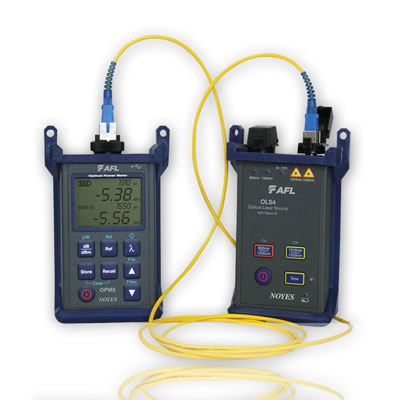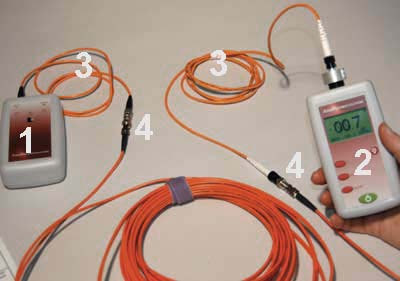High-performance fibre testing equipment delivers reliable material quality assessment.
Discovering the Advantages of Optical Fibre Checking for Enhanced Interaction Solutions
The importance of optical fibre screening in contemporary interaction systems can not be overstated, as it functions as a foundation for making sure network reliability and performance. Using advanced methodologies such as Optical Time-Domain Reflectometry (OTDR) and insertion loss analysis, organizations can not just determine faults yet likewise maximize their configurations. This positive screening strategy has profound implications for signal quality and operational effectiveness, raising the inquiry of exactly how these techniques add to lasting sustainability in an ever-evolving technological landscape. Understanding these dynamics is vital for stakeholders intending to maintain a competitive edge.
Value of Optical Fiber Testing
The importance of optical fiber screening can not be overemphasized in today's data-driven atmosphere. As companies increasingly depend on high-speed information transmission for everyday procedures, the stability and efficiency of optical fiber networks are extremely important. Testing ensures that these networks can support the substantial quantities of information generated and transferred perfectly, cultivating effective interaction and connection.
Optical fibre testing serves numerous vital functions, including confirming installment quality, identifying prospective mistakes, and determining overall system efficiency. Normal screening can prevent pricey downtimes and service disturbances, allowing companies to maintain functional continuity. Furthermore, it assists in compliance with market standards and laws, guaranteeing that fibre optic installments fulfill required specifications for safety and security and integrity.
In addition, testing can improve the longevity of fibre optic systems. By proactively identifying concerns such as signal loss, depletion, or adapter failures, organizations can deal with problems before they escalate, hence prolonging the life of their infrastructure. In recap, optical fibre screening is not simply a technological demand but a calculated investment that boosts network reliability, maximizes performance, and inevitably supports the development and efficiency of modern-day communication systems.
Secret Testing Techniques

OTDR is a vital method made use of to identify mistakes, step splice losses, and examine the total honesty of a fibre optic link. By sending a pulse of light down the fibre and examining the mirrored light, specialists can identify areas of mistakes and assess the network's performance over fars away.
Insertion loss screening gauges the quantity of signal loss that takes place when light travel through a link or splice. This method is important for verifying that links satisfy specific loss limits, which is essential for maintaining optimal performance in communication systems.
Optical return loss testing quantifies the amount of light mirrored back in the direction of the resource as a result of blemishes in the fiber or connections. High return loss values suggest much better performance and decreased signal deterioration.
Together, these testing methods provide a comprehensive evaluation of fiber optic networks, guaranteeing their his explanation dependability and performance in diverse communication applications.
Influence On System Performance
Reliable optical fiber testing directly affects the total efficiency of communication systems. By making sure the integrity of fibre optic wires, screening determines prospective faults such as attenuation, splice loss, and connector imbalance. These concerns can dramatically weaken signal high quality, causing disruptions and decreased information transmission speeds.

Furthermore, routine optical fibre testing adds to long-term system sustainability. It makes it possible for early detection of damage, enabling prompt upkeep and upgrades before major failings take place. This not only extends the pop over to this web-site life-span of the infrastructure however additionally ensures that interaction systems remain competitive in regards to efficiency.
Cost-Effectiveness and Efficiency
Cost-effectiveness is an important factor to consider in the deployment and maintenance of optical fibre networks. Carrying out durable optical fiber testing procedures can substantially lower functional prices by identifying problems prior to they rise right into significant troubles. optical fibre diameter analyser. By discovering mistakes, depletion, and various other efficiency limitations early, companies can stay clear of pricey repair services and downtime, which can disrupt services and bring about income loss
Moreover, reliable screening approaches streamline the setup process, permitting service technicians to work better. This translates to decrease labour prices and faster job completion times. Advanced screening devices, such as Optical Time Domain Reflectometers (OTDRs), allows a precise analysis of fibre quality, ensuring that only optimum materials are made use of, therefore minimizing waste.
Routine screening likewise adds to much better source allotment. By recognizing the network's performance, companies can make enlightened decisions regarding upgrades and expansions, making sure that financial investments are made where they are most needed. In recap, optical fiber screening improves cost-effectiveness and performance, sustaining the long-term sustainability and competition of interaction systems in an increasingly demanding market.
Making Sure Long-Term Reliability
Executing strenuous optical fiber testing not only improves price savings and functional performance but also plays an essential duty in ensuring the long-term dependability of interaction networks. Regular screening techniques, including attenuation and bandwidth evaluations, assistance determine possible degradation in fibre performance before it results in service disruptions.
By utilizing innovative screening techniques, network drivers can determine mistakes or weak points in the fiber framework, permitting for prompt removal. This aggressive technique lessens downtime, making sure that interaction systems stay practical and effective. Routine testing adds to the growth of a much more durable network, as operators can adjust and enhance their facilities based on real-time data insights.
In addition, making certain conformity with industry standards via optical fibre testing reinforces the top quality and stability of the entire interaction system. This adherence not only reinforces self-confidence amongst stakeholders but additionally lines up with regulatory needs, which are significantly strict.
Conclusion
Finally, optical fibre testing works as a fundamental part in boosting interaction systems. By utilizing various testing methods, such as OTDR and click to investigate insertion loss analyses, networks can achieve optimum performance and integrity. The proactive identification of faults not only boosts signal high quality but likewise reduces downtime, eventually contributing to cost-effectiveness and functional performance. Adherence to industry criteria fosters stakeholder confidence, making certain the long-term sustainability of communication frameworks in an increasingly data-driven landscape.